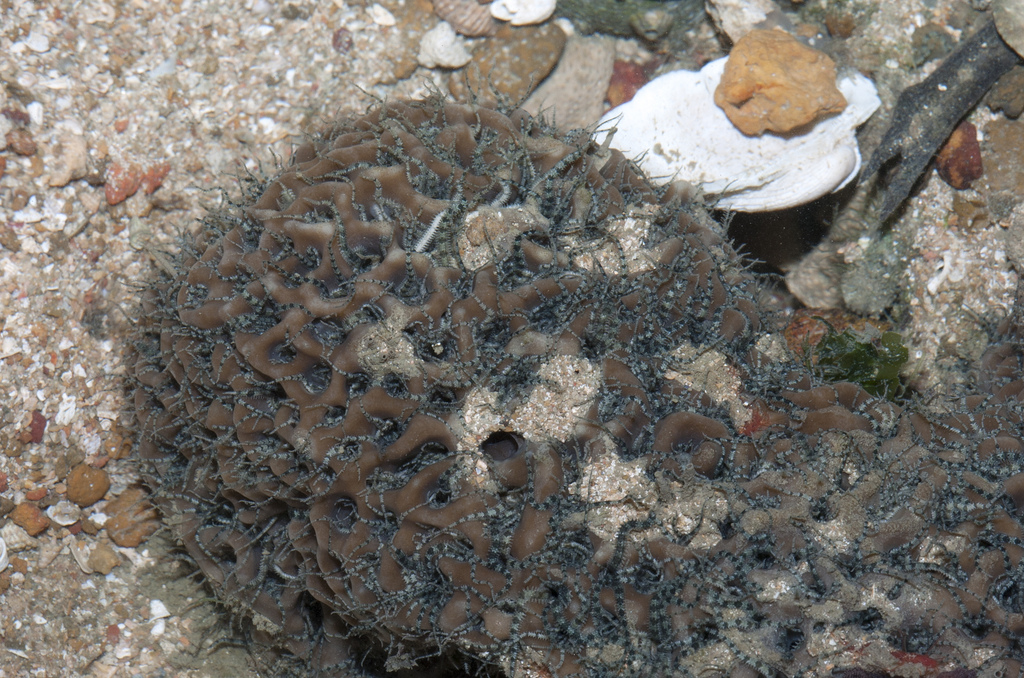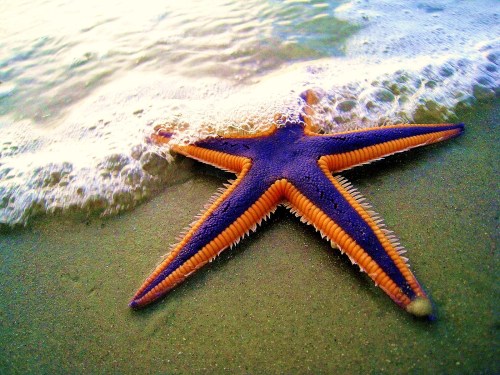by Piter Kehoma Boll
If you ever walked along the beaches of the Atlantic Coast from the United States to Brazil, you probably found the skeletons of today’s fellow lying on the sand. Its scientific name is Mellita quinquiesperforata, known in English as the five-slotted sand dollar.
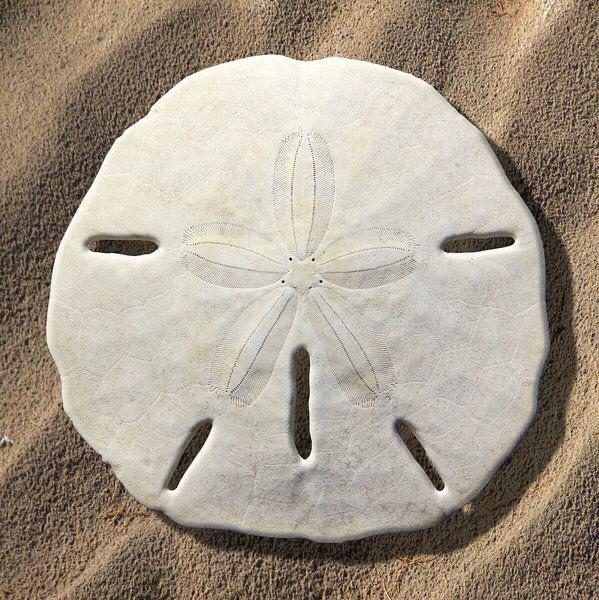
The five-slotted sand dollar is an echinoderm of the class Echinoidea and, therefore, closely related to sea urchins. Like all sand dollars, it has a flattened body with a secondary bilateral symmetry that evolved from the original radial symmetry of echinoderms (which itself is a secondary development of the original bilateral symmetry of bilaterian animals). Their body is flat, almost circular, but wider than long, reaching up to 12 cm in width. Live animals have a kind of velvet-like texture formed by the spines and hairs covering their skin. A star-like mark can be seen on their backs, which is formed by five rows of pores through which podia, responsible for gas exchange, come out. One of the arms of the star is directed to the front of the animal. The mouth is located at the center of the ventral side and the anus is at the posterior end of the body.
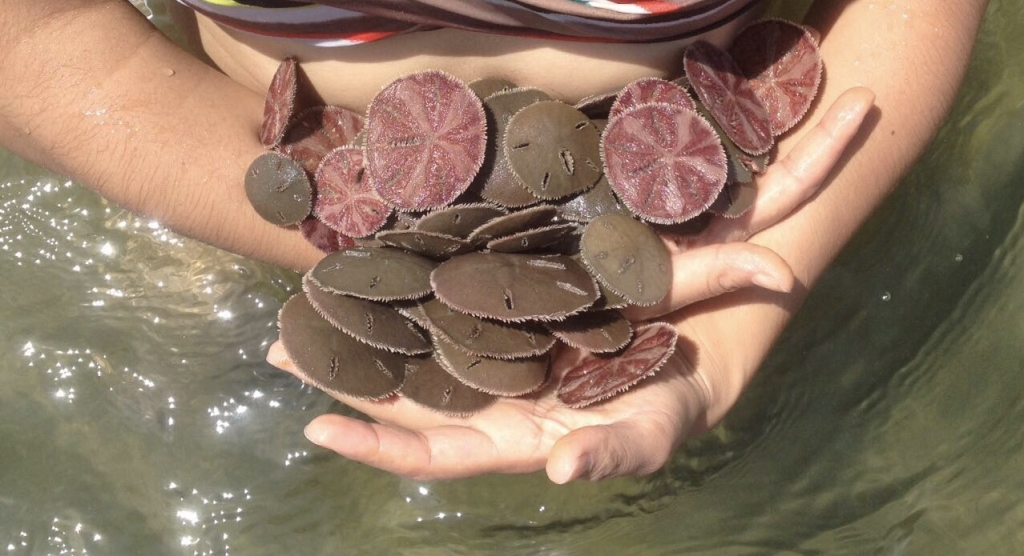
The name of the five-slotted sand dollar comes from the fact that its body has five elongate perforations, four of which are continuous with the four lateral rows of pores and the fifth one is behind, between the two posterior rows. These openings help the sand dollar move more easily through the sand by allowing sand to pass through their bodies and they can also help drag food toward the mouth. At the same time, the perforations embed them better in the sand, reducing their chances of being swept away by the waves.
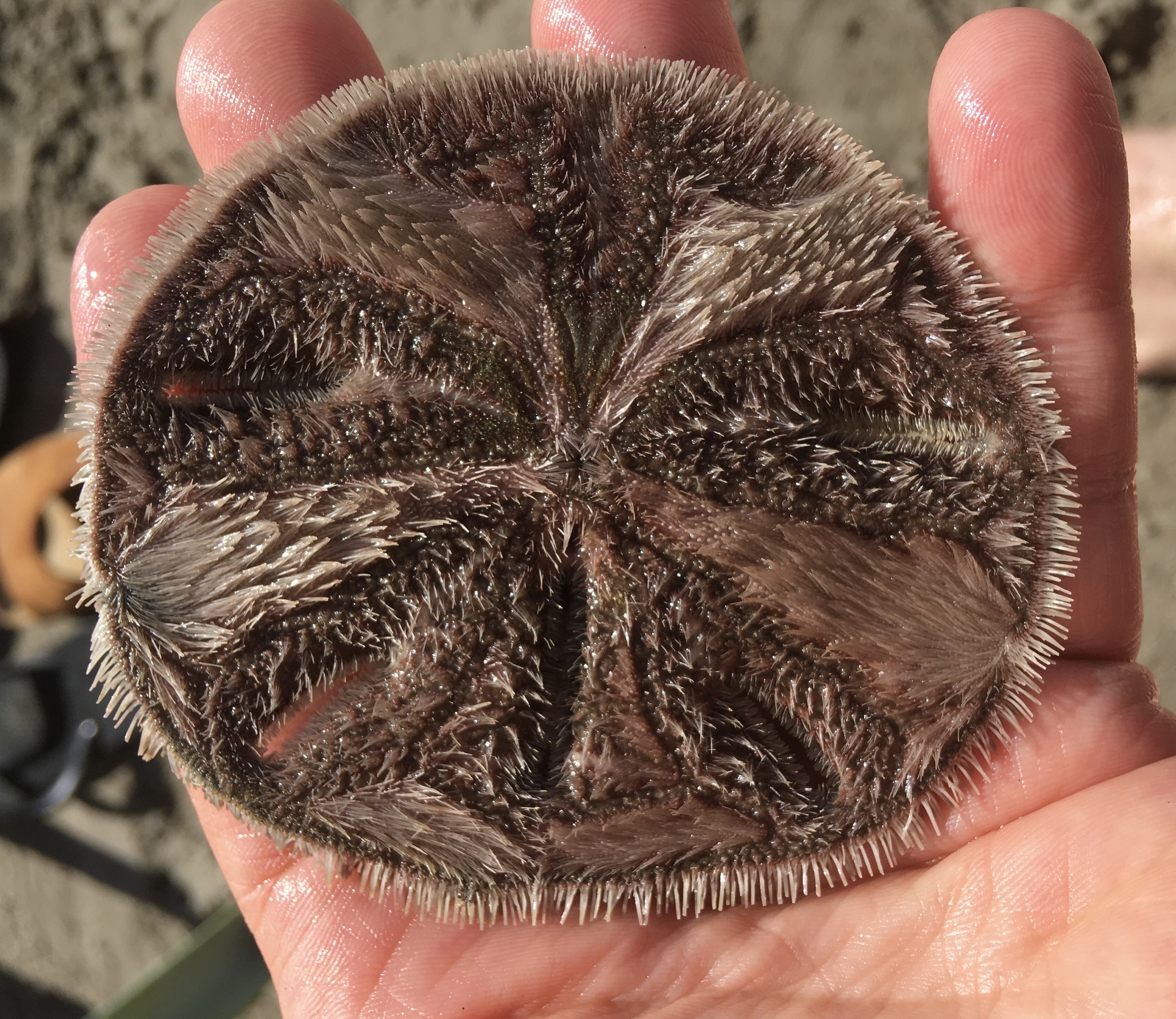
The five-slotted sand dollar likes substrates made of fine sand, being unable to burrow into gravel or coarse sand. Muddy substrate is aversive to them but they will burrow into it if there is no choice.
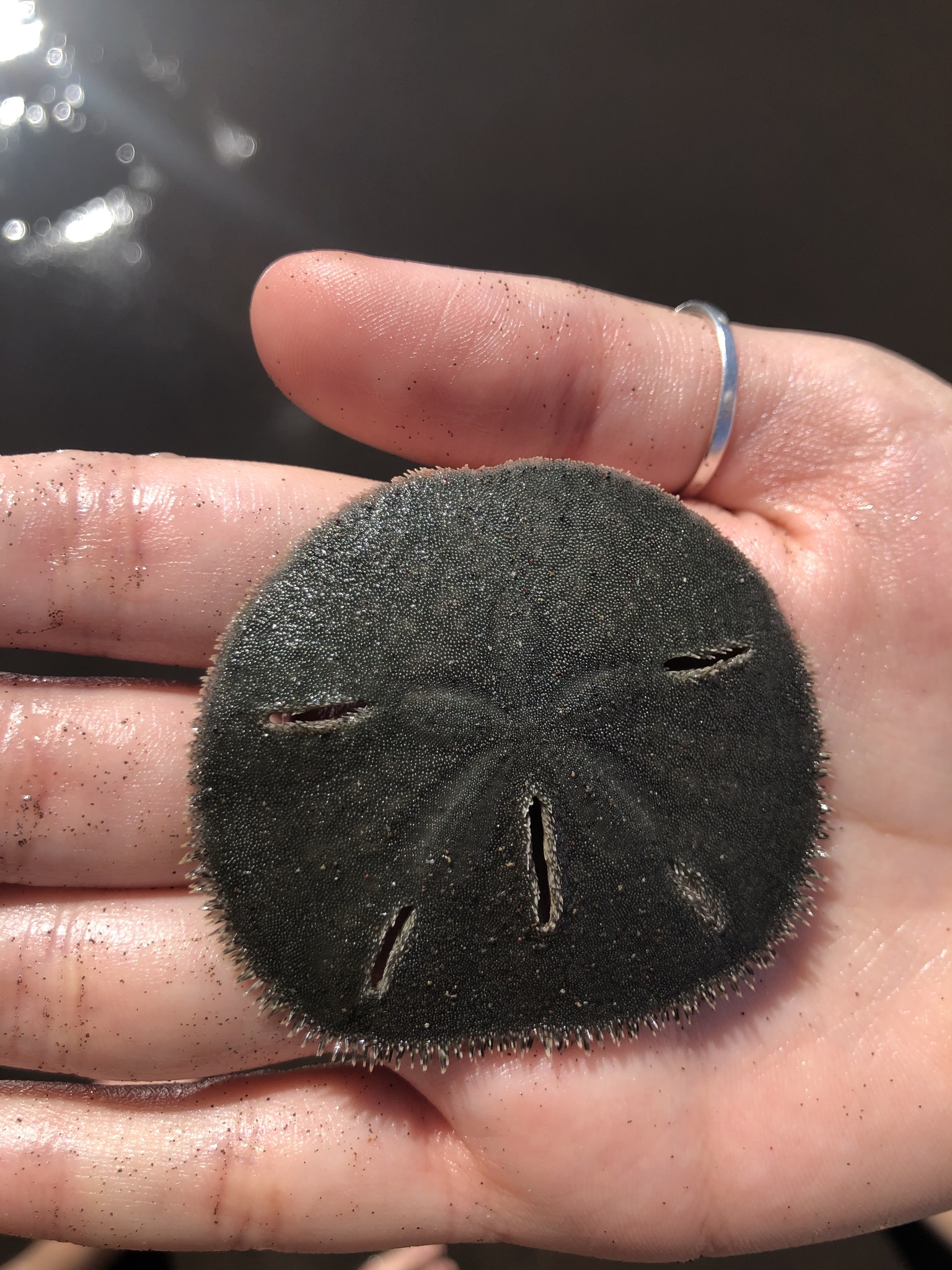
The five-slotted sand dollar is a deposit feeder, feeding on small organisms from the sand, especially bacteria and microscopic eukaryotes, which it removes from the small clay particles that it ingests. Its feeding behavior and general displacement through the sediment helps increase oxygenation of the substrate. Thus, its presence has a large impact on the community of organisms able to live on a beach.
– – –
– – –
References:
Alexander, D. E., & Ghiold, J. (1980). The functional significance of the lunules in the sand dollar, Mellita quinquiesperforata. The Biological Bulletin, 159(3), 561-570. https://doi.org/10.2307/1540822
Bell, B. M., & Frey, R. W. (1969). Observations on ecology and the feeding and burrowing mechanisms of Mellita quinquiesperforata (Leske). Journal of Paleontology, 553-560. https://www.jstor.org/stable/1302333
Findlay, R. H., & White, D. C. (1983). The effects of feeding by the sand dollar Mellita quinquiesperforata (Leske) on the benthic microbial community. Journal of Experimental Marine Biology and Ecology, 72(1), 25-41. https://doi.org/10.1016/0022-0981(83)90017-5
Weihe, S. C., & Gray, I. E. (1968). Observations on the biology of the sand dollar Mellita quinquiesperforata (Leske). Journal of the Elisha Mitchell Scientific Society, 315-327. https://www.jstor.org/stable/24333312
– – –
* This work is licensed under a Creative Commons Attribution-ShareAlike 4.0 International License.
This work is licensed under a Creative Commons Attribution-ShareAlike 4.0 International License.
** This work is licensed under a Creative Commons Attribution-NonCommercial 4.0 International License.
This work is licensed under a Creative Commons Attribution-NonCommercial 4.0 International License.







